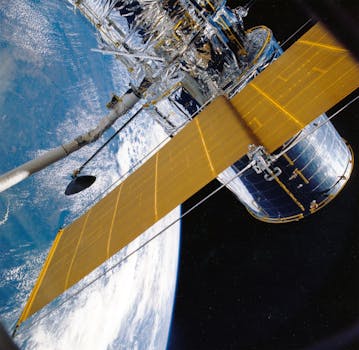
Revolutionizing Connectivity: The Latest Breakthroughs in Satellite Telecommunications
Revolutionizing Connectivity: The Latest Breakthroughs in Satellite Telecommunications have been gaining significant attention in recent years, and for good reason. With the increasing demand for global connectivity, satellite telecommunications have emerged as a vital component in bridging the digital divide. In this article, we will delve into the latest breakthroughs in satellite telecommunications and explore their impact on revolutionizing connectivity.
Introduction to Satellite Telecommunications
Satellite telecommunications involve the use of satellites to transmit and receive data, voice, and video signals. This technology has been around for several decades, but recent advancements have made it more efficient, reliable, and cost-effective. Satellite telecommunications offer a wide range of benefits, including global coverage, high-speed data transfer, and resilience in the face of natural disasters or network outages.
Latest Breakthroughs in Satellite Telecommunications
Several recent breakthroughs have significantly enhanced the capabilities of satellite telecommunications. One of the most notable advancements is the development of high-throughput satellites (HTS). HTS offer significantly higher data transfer rates than traditional satellites, making them ideal for applications such as broadband internet, video streaming, and cloud computing. Another significant breakthrough is the use of advanced propulsion systems, such as electric propulsion, which enables satellites to maintain their position and altitude more efficiently.
Impact on Global Connectivity
The latest breakthroughs in satellite telecommunications are having a profound impact on global connectivity. With the ability to provide high-speed internet access to remote and underserved areas, satellite telecommunications are helping to bridge the digital divide. This, in turn, is enabling communities to access essential services such as education, healthcare, and financial inclusion. Furthermore, satellite telecommunications are also playing a critical role in disaster response and recovery efforts, providing vital communication links when traditional infrastructure is damaged or destroyed.
Challenges and Future Directions
Despite the many advances in satellite telecommunications, there are still several challenges that need to be addressed. One of the main challenges is the issue of latency, which can affect the performance of real-time applications such as video conferencing and online gaming. Another challenge is the need for more efficient and cost-effective launch systems, which would enable the deployment of more satellites and further reduce the cost of access to space. As the demand for satellite telecommunications continues to grow, it is likely that we will see significant investments in research and development, leading to even more innovative solutions and applications.



